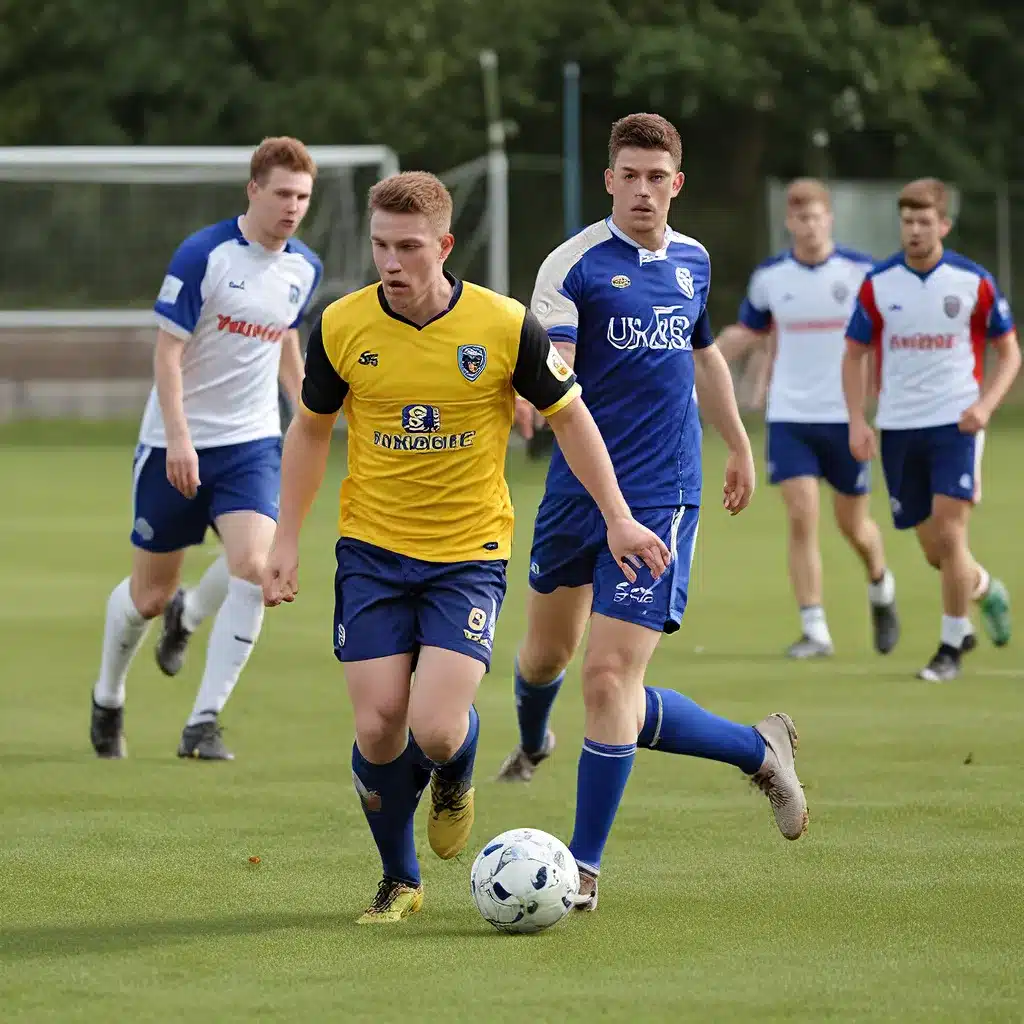
Football is a sport of passion, skill, and resilience – and nowhere is that more apparent than in the Kent Football League. This vibrant local league is the heartbeat of the community, where clubs come together to battle it out on the pitch, week in and week out. But amidst the thrill of victory and the agony of defeat, one constant challenge looms large: injuries.
The Cruel Reality of Injury Setbacks
In the fast-paced world of football, injuries are an ever-present threat, and the Kent Football League is no exception. Whether it’s a torn ACL, a concussion, or a nagging muscle strain, these setbacks can have a devastating impact on a team’s aspirations. The loss of a key player can leave gaping holes in the lineup, disrupting the delicate balance that underpins a successful campaign.
Take the case of Sevenoaks Town FC, who were riding high in the league table last season until a spate of injuries to their midfield trio. The loss of stalwarts like Liam Carter and Dominic Brimmer was a crushing blow, leaving the team struggling to maintain their momentum. As Kent League fan Samantha Wilkins recalls, “It was like the heart had been ripped out of their team. Suddenly, they were scrambling to find solutions, and it just wasn’t the same.”
Adapting to Adversity: Strategies for Injury Management
But in the face of such adversity, the savviest Kent Football League clubs have learned to adapt and evolve. They understand that effective injury management is not just a matter of luck, but a strategic imperative.
“The teams that thrive in this league are the ones that have a robust contingency plan in place,” explains Tom Harrison, a seasoned coach with over a decade of experience in the Kent Football League. “It’s not enough to just have a strong starting XI; you need to have depth, versatility, and the ability to seamlessly integrate new players when injuries strike.”
One club that has mastered this art is Maidstone United FC. When their star striker, Jamal Adebayo, suffered a season-ending ACL tear, the team’s coaching staff sprung into action. They quickly identified Liam Hogan, a promising young forward from their youth academy, and seamlessly integrated him into the starting lineup.
“It was a tough blow to lose Jamal, but we knew we had to adapt,” says Maidstone United’s manager, Sarah Kemp. “Liam had been waiting in the wings, and we had confidence in his ability to step up and fill the void. It was a testament to our player development program and our commitment to nurturing homegrown talent.”
Harnessing the Power of Community
But injury management in the Kent Football League is not just about tactical planning and player recruitment. It’s also about harnessing the power of the local community.
“When one of our own is down, the whole town rallies behind them,” says David Piper, a lifelong fan of Tunbridge Wells FC. “The club, the supporters, and even businesses in the area come together to support the player’s recovery, both physically and emotionally.”
This sense of camaraderie is particularly evident in the case of Callum Sweetman, a promising young midfielder for Tonbridge Angels FC. When Sweetman suffered a devastating head injury during a match, the entire Kent football community sprang into action.
“The outpouring of support was incredible,” recalls Tonbridge Angels’ team captain, Emma Tanner. “Within days, we had organized a fundraiser to cover Callum’s medical expenses, and fans from across the league were showing up to donate and offer well-wishes. It was a true testament to the power of this community.”
Embracing a Proactive Approach
As the Kent Football League continues to evolve, the savviest clubs are not just reacting to injuries, but actively probing their prevention and management. They are investing in state-of-the-art medical facilities, employing sports scientists and nutritionists, and using cutting-edge data analytics to identify injury risk factors.
“It’s all about getting ahead of the curve,” says Alex Greenwood, the sports science coordinator for Gillingham FC. “We’re not just waiting for injuries to happen; we’re constantly monitoring our players’ fitness, nutrition, and recovery, and making adjustments to minimize the risk of setbacks.”
This proactive approach has paid dividends for Gillingham, who have seen a significant reduction in the number of soft tissue injuries in their squad over the past two seasons. “It’s not just about the bottom line,” Greenwood adds. “It’s about keeping our players healthy, happy, and on the pitch, where they can give their all for the team and the community.”
The Resilience of the Kent Football League
Injuries may be an unavoidable part of the game, but in the Kent Football League, they are met with a fierce determination and a steadfast commitment to overcoming adversity. Whether it’s strategic planning, community support, or proactive prevention, these clubs are proving that they have the resilience to weather any storm and emerge stronger than ever.
As Samantha Wilkins so eloquently puts it, “The Kent Football League is not just about the matches on the pitch; it’s about the heart, the passion, and the unwavering determination of the players, the coaches, and the fans. Injuries may knock us down, but they’ll never keep us out of the game.”
So, keep your eyes on the Kent Football League, because when it comes to the triumph of the human spirit, this local league is a shining example of what can be achieved through grit, resilience, and the power of community.

